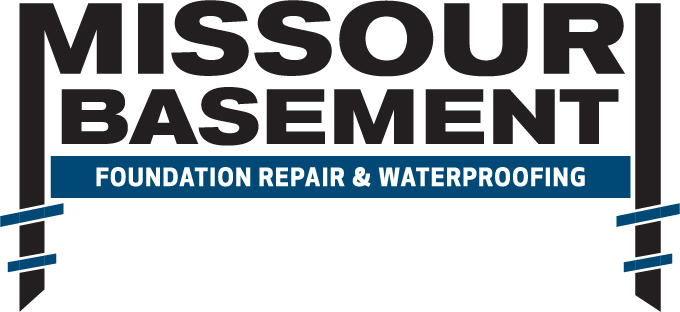Urethane Injection Crack Repair
Because of their superior strength, and faster construction times, poured concrete foundations have been the choice of builders over hollow block walls throughout the greater St. Louis, MO Region for decades now. However, there is an unwritten guarantee that comes with any poured foundation wall…its guaranteed to crack. This has created a huge opportunity in our area for foundation crack repair companies.
Cracking is a common issue that occurs with poured foundations due to the release of water during the curing process (known as shrinkage) or because of settlement. Cracks are commonly found near breaks in walls such as at the corners of windows and beam pockets, or in the middle of long walls. These cracks will usually leak and surface repairs with rigid products such as hydraulic cement or epoxy will often fail within a couple of years. To properly repair a leaking foundation crack, it must be filled throughout the full depth of the wall with polyurethane foam. Urethane foam will remain flexible for a number of years and will allow for slight thermal movement in the wall.
Urethane injection is not a structural repair, it is simply an economical, in many cases temporary water stop solution and most legitimate warranties are limited in their coverage.
Foundation cracks should be inspected by a professional to determine the cause of the crack and the proper repair method.
Carbon Fiber Foundation Crack Repair
Seals, Strengthens, & Stabilizes
When assessing a foundation crack repair, we have to first identify it as either structural or non-structural.
Non-Structural foundation cracks, commonly referred to as “Shrinkage Cracks”, are almost a guarantee with any poured foundation wall and are usually vertical. While these types of cracks pose no immediate threat to your foundations’ structural integrity, we recommend a proactive approach by sealing and stabilizing these cracks before they become a problem, such as water intrusion and even cancer causing radon into your basement.
Structural foundation cracks are the result of either lateral pressure pushing on the wall, foundation settlement, or both. These types of foundation cracks will show up as diagonal, horizontal, and vertical. Once a diagonal or horizontal crack is visible, it is highly recommended that you take action as soon as possible to correct the problem. These types of cracks may have taken years to develop, however, once they are present, the foundation damage accelerates because the foundation wall is now weakened and is losing its structural integrity. The longer the problem is left unaddressed, the more drastic and expensive the repair method tends to be.
Why Carbon Fiber?
Originally developed for our military and NASA for its high strength and low weight, carbon fiber has been used for years in civil infrastructure and industrial repair applications. Examples range from bridge column repair, parking garage repair, to the mining industry.
Carbon Fiber has become more economically applicable for use in the foundation repair industry making it the go to choice of many foundation repair contractors.
With the time proven strength and reliability of carbon fiber foundation repair, other methods, such as epoxy injection, rarely make sense anymore.
How Does It Work?
Simple. When combined with the proper resins, carbon fiber will not stretch. In order for a foundation crack to move, it would have to stretch the carbon fiber. When used within the proper tolerances, the crack will not move, or, “stretch” the carbon fiber.
FiberLock Carbon Fiber Crack Repair System
FiberLock™ carbon fiber seals, strengthens, and stabilizes a cracked foundation. Fiberlock™ carbon fiber repairs vertical, horizontal, diagonal and outside corner foundation wall cracks. FiberLock™ is a mixture of epoxy /resin in conjunction with carbon fibers. The FiberLock™ system is warranted for 25 years. It provides structural integrity and peace of mind.



